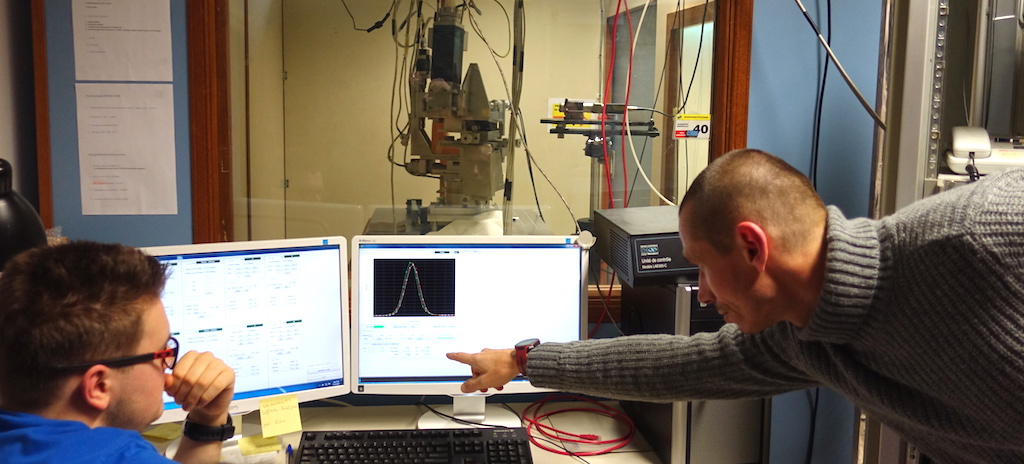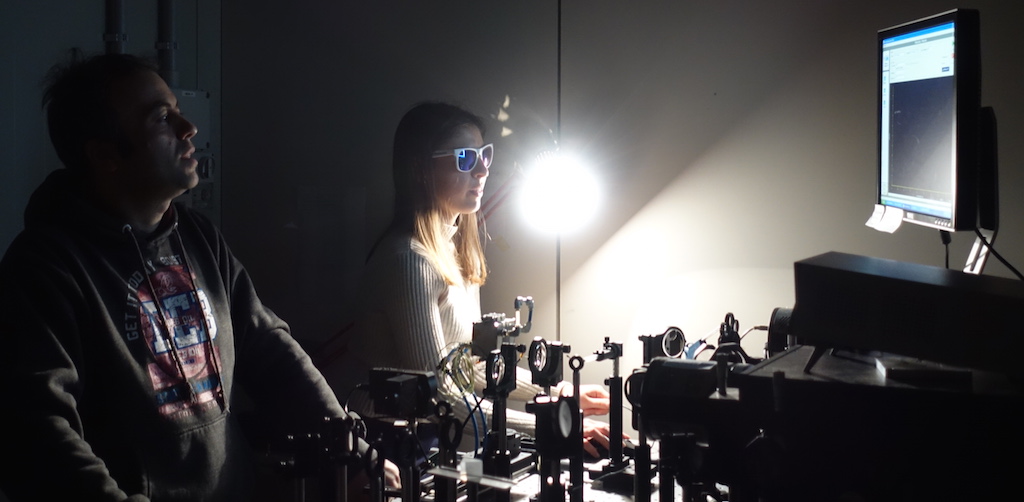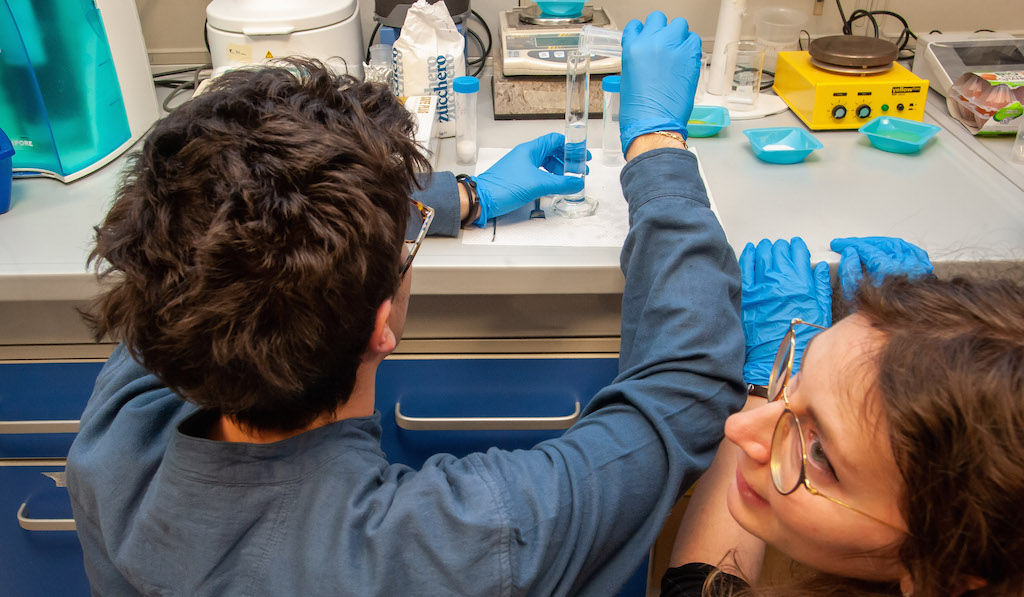Scientists of the future trained in the PaGES4 project
LocationFebruary 2019, Trieste - Italy March 15, 2019
In the 4th edition of the PaGES project, nearly 150 pupils from 7 schools in the Italian region Friuli Venezia Giulia came to visit the CERIC Italian partner facility in Trieste to conduct hands-on experiments in two synchrotron beamlines and two laboratories.
The aim of their visit has been to have a direct experience of researchers’ life, by interacting with expert scientists and machine technicians in the preparation of samples, in making the measurements and analysing the collected data which will be presented at the final public event scheduled in the different schools throughout April 2019.
At the synchrotron laser laboratory serving the free electron laser FERMI at the Italian Representing Entity, Elettra Sincrotrone Trieste, Paolo Sigalotti welcomed the students from the high schools Einstein (Cervignano del Friuli) and Duca degli Abruzzi (Gorizia), to conduct a first experiment dedicated to the study of a Michelson interferometer, using a laser source. It was explained how, through this measuring technique, the sub-components of the free electron laser (FEL) FERMI are characterized, in order to improve the performances of the whole FEL.
Edoardo Busetto introduced them to the X-Ray Optics Laboratory linked to the Hard X-Ray Elettra’s beamlines and used for diffraction measurements and support activities like the evaluation of the monochromator crystals quality and their characterisation (i.e. identification of the phases, crystal symmetry, etc.).
 X-ray optics laboratory
X-ray optics laboratory
The students from the scientific high schools Copernico (Udine) and Magrini (Gemona del Friuli) accessed the IUVS (ultraviolet-Raman resonant vibrational spectroscopy) and SISSI (infrared vibrational spectroscopy) synchrotron beamlines, with the goal of seeing the complementarity of the two techniques, which are usually used for the chemical characterization of molecules, among which are simple sugar, proteins and DNA.
Thanks to the support of the expert scientists, Francesco D’Amico (IUVS) and Lisa Vaccari (SISSI), and their teams, students learned how the problems encountered in aqueous samples analysed with IR technique are overcome through the use of UV-Raman resonant spectroscopy, which is able to characterize aqueous solutions, even when much diluted.
 IUVS (ultraviolet-Raman resonant vibrational spectroscopy) synchrotron beamline
IUVS (ultraviolet-Raman resonant vibrational spectroscopy) synchrotron beamline
Finally, the Nanoinnovation Lab opened its doors to the classrooms from the high schools Galilei (Trieste), Oberdan (Trieste), and Buonarroti (Monfalcone), to focus on nanomedicine perspectives, with the contribution of expert scientists, PhD students and post-doc researchers (Loredana Casalis, Pietro Parisse, Luciana Gneo, Gesmi Milcovich, Beatrice Senigagliesi). Students had the chance to work with gold nanoparticles (AuNPs) and their features, by carrying out colorimetric assays of various AuNPs colloidal suspensions (i.e. 12 nm and 20 nm), investigating how the aggregation state induces a macroscopic colorimetric variation depending on the added solution (i.e. salt, sugar and albumin). In the perspective to develop a newer diagnostic/therapeutic method, AuNPs have been tested for their ability to carry proteins. They also had the opportunity to create and investigate liposomes as model membrane for drug delivery applications by means on extrusion. They got in touch with AFM and fluorescence methods to study and match results to understand the bilayer model membrane characteristics.
 NanoInnovation Lab
NanoInnovation Lab
-
01.02.2024
PaGES 8 officially kicks-off


